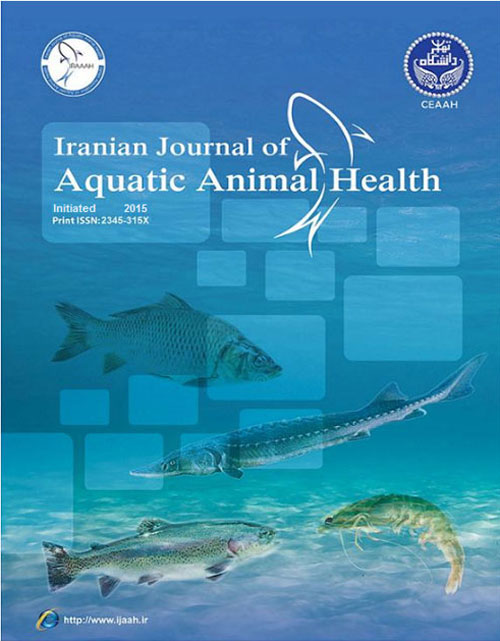Effects of salinity and plasma prolactin on chloride cells in the gill of Chalcalburnus chalcoides
Author(s):
Article Type:
Research/Original Article (دارای رتبه معتبر)
Abstract:
Gill chloride cells and prolactin hormone are of high importance in the adaptation of euryhaline fish. Guldenstati (Chalcalburnus chalcoides, 1772), an adromous fish, migrates from the Caspian Sea to rivers to have a more successful reproduction. The present study was aimed to evaluate the changes in the number and size of C. chalcoides gill chloride cells as well as to determine the relationship of its plasma prolactin with water salinity. Eighty-four individual C. chalcoides were collected from river (Lale Roud; 0.4 ppt), Lale Roud estuary (3.75 ppt), and Caspian Sea (9.71 ppt). The sampling was lasted for a-12 month period in 2014. The highest (1349±152) and lowest (881±37) number of gill chloride cells were observed in the animals collected from the Caspian Sea and in the river (Lale Roud), respectively. However, plasma prolactin demonstrated the highest level in C. chalcoides caught from the river (0.89±0.02 ng ml-1), but the lowest amount (0.70±0.03 ng ml-1) in the ones collected from the Caspian Sea. Overall, these results suggest that C. chalcoides migration across its habitats is an energy consuming ecological behavior, and the fish consumes high energy just after breeding and while returning to the Caspian Sea.
Keywords:
Language:
English
Published:
Sustainable Aquaculture and Health Management Journal, Volume:3 Issue: 2, Summer and Autumn 2017
Pages:
11 to 21
https://magiran.com/p1781007


